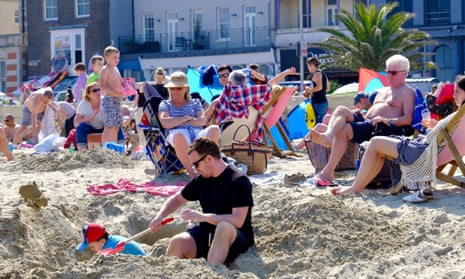British shopping centres, DIY stores and garden centres struggled over the bank holiday weekend as shoppers stayed outside to enjoy the blazing sunshine.
Indoor shopping centres were hit particularly hard, with a year-on-year decline in footfall of more than 11% on both Friday and Saturday, according to retail data company Springboard. Separate data from Ipsos Retail Performance also showed a 10.4% decline in footfall in non-food stores on Easter Saturday against last year.
Retail parks, whose garden centres and DIY shops rely on Easter to help see them through much of the year, also saw footfall decline by 2.4% and 1.3% on Friday and Saturday respectively.
Tim Denison, a director at Ipsos, said: “Paint pots and brushes have come off second best to buckets and spades this Easter. Some of the Easter money that would have been spent in the shops will have been diverted to leisure pursuits and activities, turning up the heat further on retailers in the non-food sector.”
However, the number of shoppers on the high street increased by almost a fifth on Friday compared with Good Friday 2018, Springboard said. On Saturday footfall was up 8.8%, and up 15.6% in the first half of Sunday, according to preliminary data.
The high street figures benefited from a comparison with a particularly weak performance last year, when heavy rain kept shoppers at home as an unusually early Easter Sunday fell on 1 April.

Diane Wehrle, marketing and insights director at Springboard, said the figures showed that shoppers were growing more sensitive to weather as they increasingly opt for more enjoyable experiences and shopping for essentials online.
Retailers have struggled in the past two years as consumers’ spending power came under pressure from inflation, although recent data has suggested a gradual improvement in the sector’s fortunes. Retail sales in the first quarter increased by 1.6% on the final three months of 2018, according to the Office for National Statistics.
Richard Lim, chief executive of the Retail Economics consultancy, said the economic climate appeared to be slightly more favourable for retailers this year amid a “sustained period of wage growth”, despite continued uncertainty over the future trading relationship between the UK and the EU.
“Households are more positive now than they have been for a while,” he said. However, he added: “It’s probably too early to tell if it’s a sustained rebound in consumer spending.”
